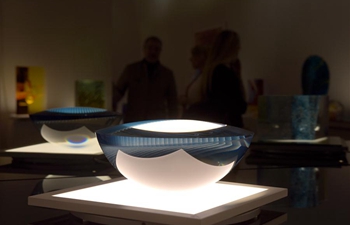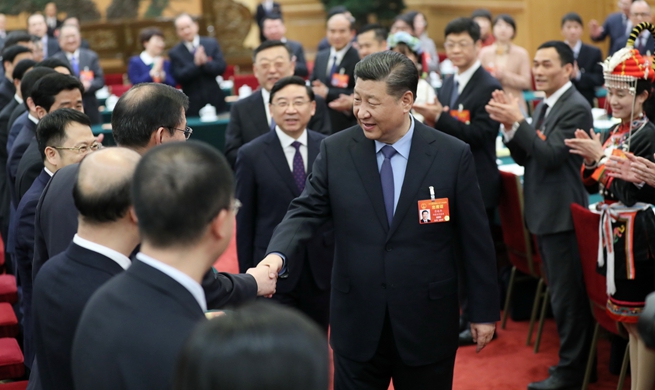BEIJING, March 17 (Xinhua) -- The following are the highlights of China's science and technology news from the past week:
-- China's Long March carrier rocket series completed 300 launches, having sent more than 500 spacecraft into space since 1970.
-- China has made significant progress in developing key technologies of the heavy-lift carrier rocket the Long March-9, which will help China realize manned lunar exploration, taking samples from Mars back to Earth, and other deep space explorations.
-- Research findings from China's Tianzhou-1 Space Mission have shown that the microgravity environment in space promotes heart cell differentiation of mice induced pluripotent stem (iPS) cells, providing new perspectives on future human space travel.
-- China's space-tracking ship Yuanwang-3 sailed to the Pacific Ocean for upcoming monitoring missions.
-- China's lunar rover Yutu-2, or Jade Rabbit-2, has driven 163 meters on the far side of the moon and is expected to work longer than its three-month design life.
-- Commercial Aircraft Corp. of China, developer of China's C919 passenger aircraft, has started construction of its customer service training base in Jiaxing, east China's Zhejiang Province.
-- Chinese researchers have found that the lake water storage in the Qinghai-Tibet Plateau increased by 140.8 cubic kilometers from 1990 to 2013.
-- After using satellites and cameras, Chinese researchers have managed to use tree ages to accurately record glacier changes that happened centuries ago in the Qinghai-Tibet Plateau, the world's Third Pole.
-- A Chinese cat lover and engineer built an AI-powered shelter for stray animals in winter.
-- Chinese scientists have designed a new screening method for hepatitis B carriers, to detect early-stage hepatocellular carcinoma, the most common type of primary liver cancer.
-- Chinese researchers have put forward a new deployment plan for the Internet Protocol version 6 (IPv6)-based network to tackle China's shortage of IP addresses.
-- A recent Chinese study has shown that long-term exposure to PM2.5, a major particle matter pollutant increases the risk of diabetes.
-- Chinese researchers have found that perovskite solar cells can retain most of their power conversion efficiency in near space, providing perspectives on the new solar cells' future application in space.
-- An international study found that freshwater aquaculture in ponds converted from rice paddy fields may cause a significant rise in methane emissions, a major greenhouse gas responsible for global warming.

















